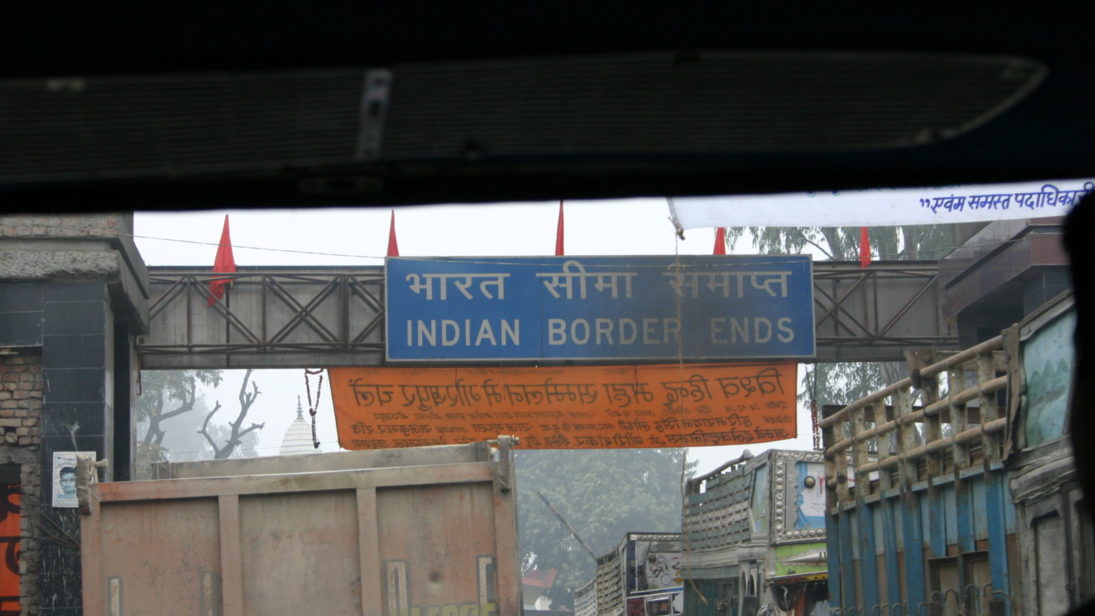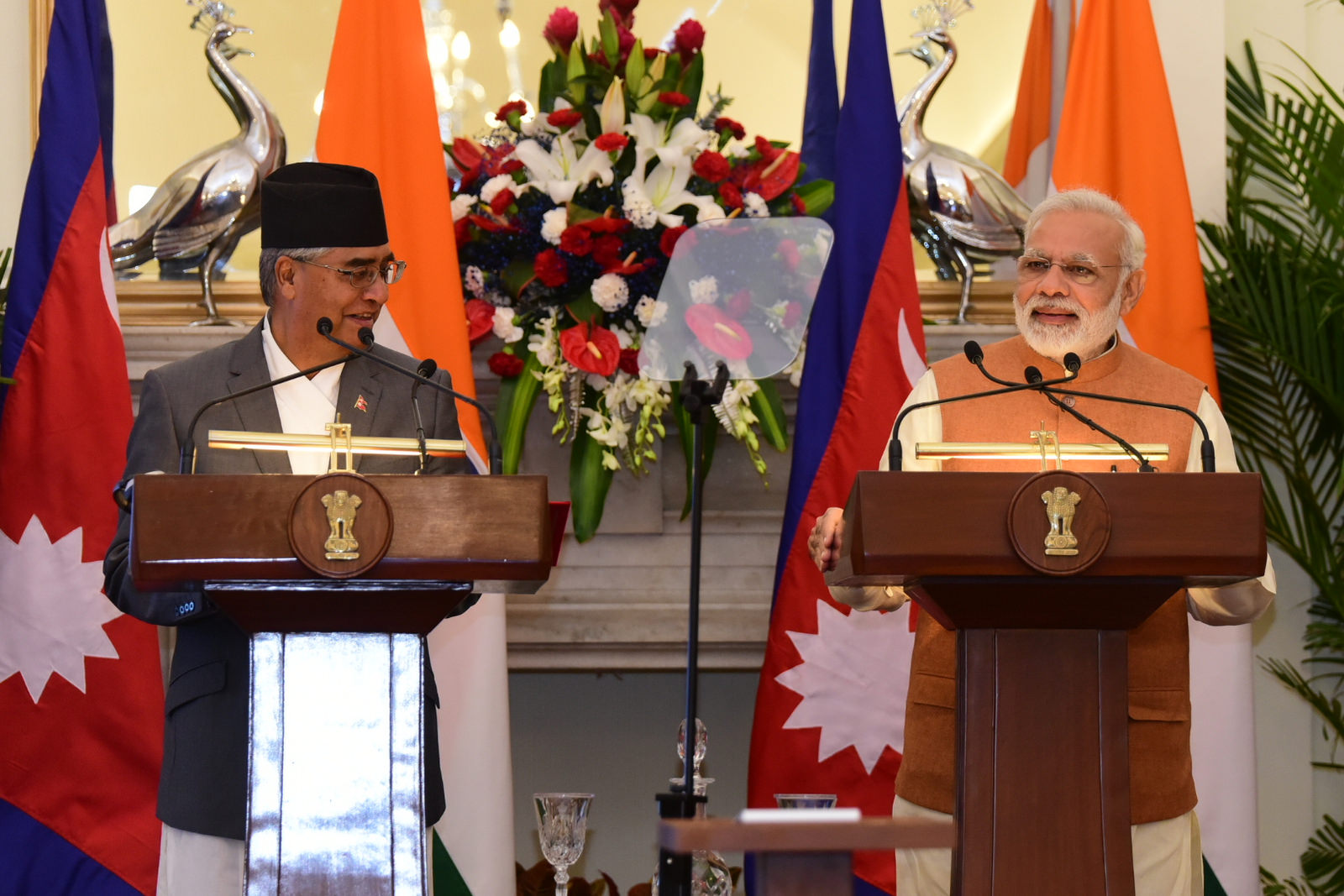
The 1950 Treaty of Peace and Friendship has been at the center of the troubled history of Nepal-India relations. At the time the text was signed, the world was grappling with the impact of the Cold War and Nepal was a neighbor of great strategic importance to the new Republic of India due to its proximity to Chinese-occupied Tibet. The monarchy of Nepal sought friendship with India in order to prevent New Delhi from supporting the democracy movement in its country. Though the treaty laid the framework for decades of friendly India-Nepal relations, the regional and geopolitical context has dramatically transformed and the priorities of both countries have changed. In October, a government-appointed Eminent Persons Group on Nepal-India relations consisting of officials from both Nepal and India convened for a third time in Kathmandu. On the table for discussion was the 1950 treaty, which many have criticized for undermining Nepal’s sovereignty and which Kathmandu has declared “not in tune with time.”
Over six decades later, India is preoccupied with Beijing’s influence in Nepal while Nepal remains concerned with Indian overreach. While these concerns are legitimate, these worries often translate into obsessions that prevent both countries from carving out new ways to tackle challenges in their bilateral relations. There is no doubt that India-Nepal relations must be remodeled into a strategic partnership that addresses mutual security and paves the way for economic prosperity. Towards this end, Kathmandu should use the opportunity of the treaty review to pave the way for cooperation on sub-regional and regional economic connectivity initiatives and address longstanding issues related to the border.
Connectivity in India-Nepal Relations
Nepal has set its sights on becoming a lower-middle-income country by 2030. For that goal to be achieved, Kathmandu must find a way to expand its trade base, attract investment from outside of Nepal, and control its trade deficit with India. According to an Asian Development Bank report, a connectivity-driven strategy for economic growth would help Nepal pursue all three of these goals by reducing the costs associated with trade and transportation. Fortunately for Nepal, the review of the 1950 treaty has been initiated at a time when New Delhi is particularly amenable to prioritizing the expansion of road, railway, and air connectivity.
For this reason, it is an opportune time for Nepal to focus on the implementation of internal and cross-border connectivity plans and policies. For example, Nepal should exploit its vast hydropower resources to promote energy trade with Bangladesh, a prospect that can only come to fruition with India’s facilitation. For Nepal, such an initiative will help diversify the country’s energy market. Although this arrangement does not entail any direct economic benefit for India, such cooperation will establish New Delhi as a generous neighbor to Nepal. The Gujral doctrine, a foreign policy doctrine delineated by former Indian Prime Minister I.K. Gujral, has already set the precedent for India’s pursuit of non-reciprocal bilateral relations with its South Asian neighbors. Gujral’s framework stated that in regards to the smaller states in South Asia—Nepal, Bhutan, Bangladesh, Sri Lanka, and the Maldives—India should give “all it can in good faith and trust.” In the past, India has demonstrated its commitment to this doctrine by accommodating Nepal’s expectations by opening trade and transit routes through its Siliguri corridor, a small strip of land that connects India’s mainland to its Northeastern states. India seems to have verbally committed to facilitating the crossborder trade of hydropower energy from Nepal to Bangladesh, but the agreement has yet to be formalized in writing and implemented.

Nepal should also push for India’s commitment to sub-regional and regional connectivity initiatives that India can benefit from as well. The momentum behind recent economic connectivity initiatives like the Bangladesh-Bhutan-India-Nepal (BBIN) Initiative and the operationalization of the BBIN-affiliated Motor Vehicle Agreement (MVA) demonstrate how both India and Nepal can mutually gain from connectivity initiatives. There is hope too in the multiple discussions around cross-border railway and road networks such as the Janakpur-Jainagar railway. The project, which had been stalled for three years for reconstruction, recently resumed its service with its narrow-gauge railway replaced by a broad-gauge railway. However, delayed projects like the Janakpur-Ayodhya twin city agreement also signal that there are deeply entrenched and unresolved issues that result in a lack of political will from both countries. It is imperative that both nations pave the way for overcoming these issues to achieve a mutually-beneficial bilateral partnership.
The Security Dimensions of Connectivity
Any discussion of regional connectivity is incomplete without an understanding of its role in global power politics. To achieve economic prosperity, Nepal has no choice other than to exercise the highest level of pragmatism possible in order to address India’s concerns related to security in the region. At the same time, Nepal has historically failed to look beyond its sovereignty obsession and has missed opportunities to benefit from India’s development.
Likewise, India has not developed an overarching security framework to engage Nepal on equal footing. The open border remains a constant irritant. India’s failure to foster a shared border and the security arrangement clearly undermines New Delhi’s purported commitment to linking its own security to that of its neighbors. The lack of cooperation and interaction between Indian and Nepali security forces make the lives of the regular people difficult on both sides of the border. In the given circumstances, therefore, one can argue that the lack of communication and cooperation at the border largely reflects the shortcomings of interactions between Kathmandu and New Delhi. Since the 1950 treaty is key to the current open-border arrangement, a review of the treaty should also be seen as an opportune time to correct these inherent problems.
Conclusion
During the initiated treaty review, Nepal should prioritize improving cross-border connectivity as this will foster fruitful opportunities for trade and investment. At present, however, cross-border connectivity remains largely dilapidated, despite the fact that India has made multiple promises to Nepal to improve cross-border linkages. In a remarkable 2014 speech made by Indian Prime Minister Narendra Modi during his visit to Nepal, he clearly declared that the “border should be a bridge not a barrier between the two neighbors.” The onus is, thus, on Nepal to make the best of this opportunity and convince India to commit to its promises. On the other hand, this is not possible until India adopts a liberal approach towards Nepal. The revised treaty therefore needs to factor in both security concerns and economic connectivity accommodating both countries legitimate needs and usher in a new partnership between the two countries.
***
Image 1: Bo Jayatilaka via Flickr.
Image 2: MEAphotogallery via Flickr.


